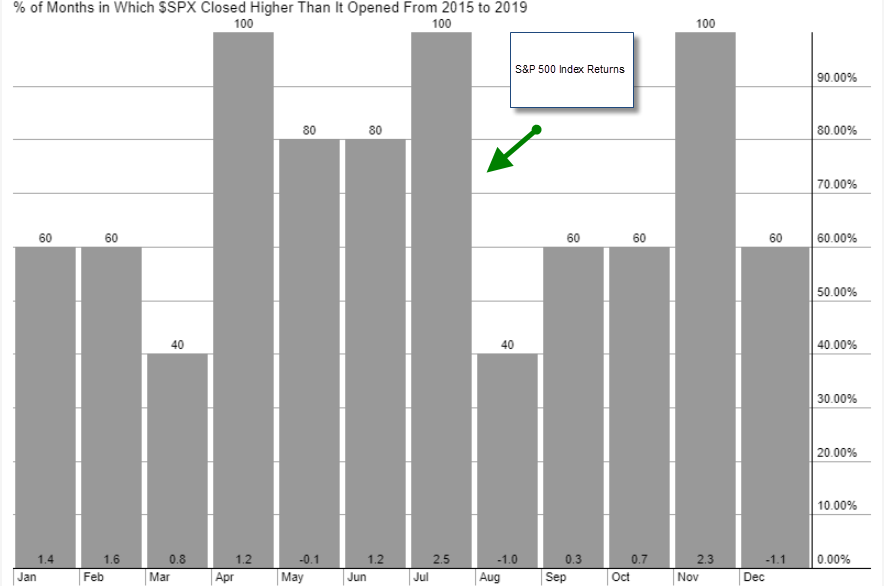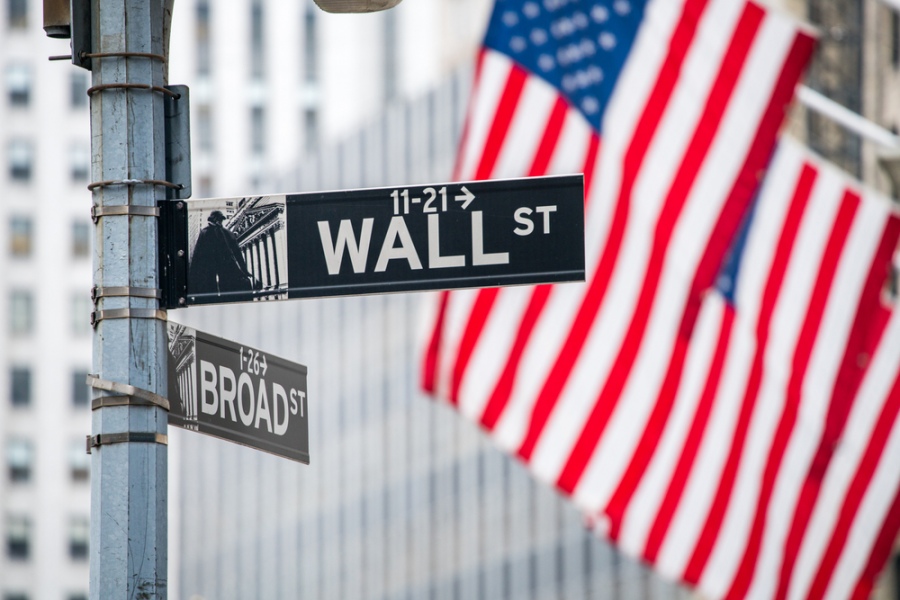As Q2 comes to an end, investors are evaluating how US stocks indices will perform during the balance of 2020. The recent uptick in COVID cases in the US has kept volatility elevated. Ahead of the Independence Day holiday in the US on July 4, the country is experiencing a record in COVID cases. More than 37 thousand new cases have been reported, with most of the spread in the southern US States. There are several facts that US indices face. There is an election in November, that could return power to the democrats. While most of this is priced in concerning a change of the Presidency, it is far from priced in when it comes to the Senate. US stock indices have rebounded sharply in the Q2, and if the spread of COVID eases, they are likely to continue to grind higher in July.
The Seasonals of July
As the Q3 commences, investors are attempting to determine if Q2 financial results will remain downbeat or surprise to the upside. Historically the major US average has outperformed in July as traders take prices up ahead of earnings. During the past 5-years, the S&P 500 index has been higher 100% of the time for an average gain of 2.5%.

During the past 10-years, the S&P 500 index has been higher 80% of the time for an average gain of 2.2%. The Nasdaq compositive has also shown consistent gains during July. During the past 5-years, the index has achieved positive returns 100% of the time for an average gain of 3.4%. During the past 10-years, the Nasdaq compositive has been higher 80% of the time for an average gain of 2.9%. The Dow Jones Industrial Average and the CFD has seen performance during July that mimics the returns of the S&P 500 index. The Dow was higher 100% of the time during the past 5-years rising an average of 2.3%. During the past 10-years, the Dow Jones Industrial Average has been higher 80% of the time for an average gain of 2%.
Volatility Has Remain Elevated
Stocks have experienced heavy volatility since the spread of COVID. The implied volatility index for the major averages, known as the VIX (there is a VIX for the Nasdaq and the Dow), surged to fresh decade highs in March (hitting 85%) but have eased by more than half ahead of the beginning of the Q3 of 2020. Despite the rapid selloff in VIX, the current levels of 30% remain well above the average levels experienced in 2019 which is approximately 15%.
The Election is Not Fully Priced In
The current levels of implied volatility on the major US indices are elevated and are near the highest expected for the year. If you look at the term structure of the VIX futures contracts, you can see that implied volatility is only slightly higher ahead of the 2020 elections. This tells us that investors are concerned about the present nearly as much as the future. The markets have already priced in a Presidential victory for Joe Biden. It now appears that more than half the executives recently polled by CNBC see Biden winning. This is no surprise since most of the betting markets, as well as the presidential polls, show Biden winning. What is not priced into the market is a Democratic sweep of both the Presidency and the Senate. The Democrats have a real path to taking the Senate which would mean that Democrats would have the opportunity to change laws. This would include reversing the tax cuts for corporations and increasing income tax. The Democrats believe that this is the only real way to pay for the massive stimulus that was unleashed to combat the impact of the pandemic. As the summer fades to fall, if the polls are near the same levels, the markets will begin to price in the impact of a Democratic sweep. Until then, there is a long way until the November 2020 elections.
The Fed and Stocks
Despite the volatility that the markets have experienced, the Nasdaq continues to trade at all-time highs ahead of the Q3. This is mainly because of the stimulus provides by the government and the Federal Reserve. The Fed unleashed a bond purchase program that is uncapped and is focusing on treasuries, agency, and high yield bonds. The Fed recently announced that it would purchase individual corporate bonds. There is a saying on Wall Street, “don’t fight the Fed”, which means if the Fed is easing and purchasing assets, stick with them. The combination of the Fed as tailwinds, a seasonal force in July, and declining COVID cases would lift stocks. The headwinds continue to be accelerating COVID cases and the potential for a US-Europe trade war.





